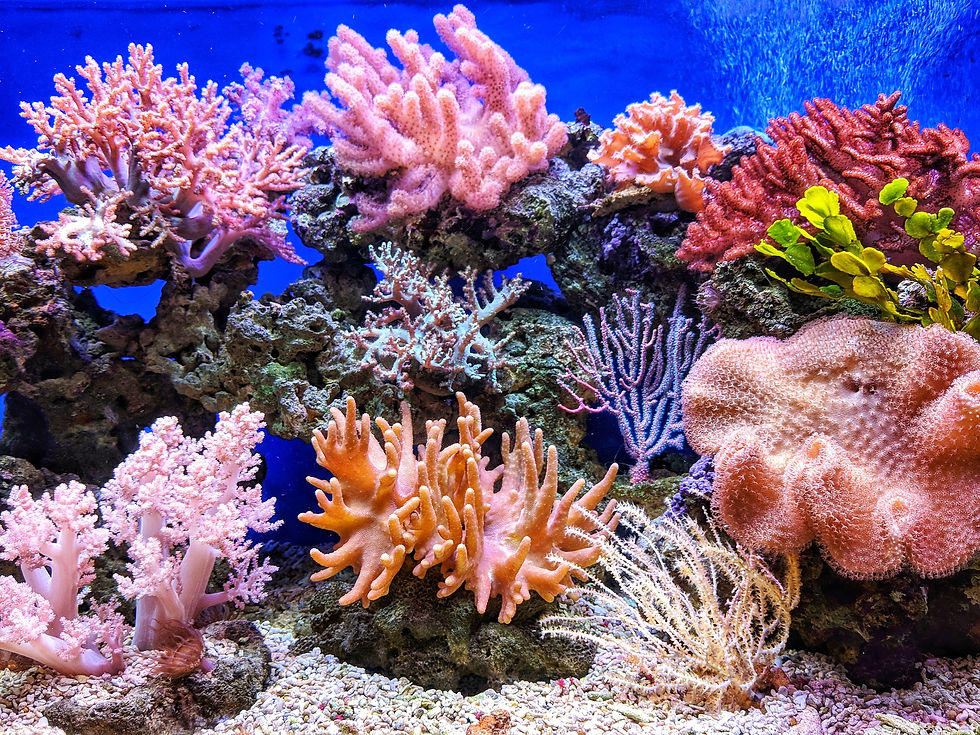“Plastic Waste From the Oceans Can Make What?”
- Jennifer Charlton

- Jun 11, 2021
- 4 min read
Updated: Aug 13, 2021
Plastic waste in our oceans has been touched upon numerous times now as, our oceans are not only the largest habitat on Earth but are the main factor in maintaining the global climate.
Unfortunately, we are polluting our oceans every day. This can be from lost fishing nets, or the dyes used to get that ‘perfect’ shade of green on the season’s newest fashion trends.
However, brands and organisations have been battling plastic waste for some time now. The realisation came after a staggering figure estimated by the Ellen MacArthur Foundation, which suggested that by 2050 our oceans will contain more plastic waste than fish.
Take a look at the video below to see the efforts of sports brand adidas.
adidas launch their End Plastic Waste campaign
Plastic waste
More than 10 million tonnes of plastic waste are dumped in our oceans each year. Not only does this waste decompose and release chemicals into the oceans, but aquatic life are getting tangled. Sometimes these animals are even killed. Moreover, aquatic life often mistakes fragments of plastic for food. When consumed, this poses great risk to aquatic life, as well as humans whom consume seafood.
“If we fail to clean up the plastic and stop the continued pollution of the oceans, we are facing the potential extinction of many sea life species and the interruption of the entire ecosystem. We also risk the health of anyone who eats seafood.” Parley for the Oceans, Plastic Pollution
Much of this waste floats in hotspots within our four major oceans (Pacific, Atlantic, Indian, and Arctic). Some drifts or does not even make it that far, which ultimately, end up being deposited on coastal regions. Much like when rivers deposit stones, for instance, plastic in the ocean is dumped.
Great Pacific garbage patch
The largest coastal dump is known as the Great Pacific Garbage Patch. This patch of rubbish is comprised of the Western and Eastern Garbage Patches, which are located between the Japanese coastline and Hawaii.
“80% of plastic in the ocean is estimated to come from land-based sources, with the remaining 20% coming from boats and other marine sources.” National Geographic, Great Pacific Garbage Patch, Marine Debris
Besides the level of plastic waste, other pollutants such as agricultural or urban waste cause a surge in algae. This surge sucks all the oxygen from aquatic life that need it to survive, including in places such as the likes of the Great Barrier Reef.
Here are three brands that are using the plastic waste found in our oceans to create clothes and accessories we use on a daily basis.
Karün
“Karün means to be nature in the mapuche language; ancestral Indigenous culture from Chile.” Karün, About Us
Karün is an eyewear brand founded in Patagonia, and the team notably work with local rural communities.
Besides creating eyewear from recycled metal to cottons, Karün also use plastics found in Patagonia’s rivers and surrounding oceans. This allows the brand to use ‘Nylon 6‘ plastics (which are essentially good plastics).
These plastics include: fishing nets, water bottles, carrier bags, and ropes.
Locals and members of the team collect plastics. They are then cleaned in Chile before being sent to Slovenia. Here, they can create their eyewear from the pellets made.
Most recently, Karün have collaborated with Big Little Lies star and activist Shailene Woodley. Below is a video about the release of her own collection with the brand.
Actor & activist Shailene Woodley releases range with Karün
Patagonia
“Since 1985, Patagonia has pledged 1% of sales to preservation and restoration of the natural environment.” Patagonia, 1% for the Planet
Patagonia is well known for its eco-friendly clothes and approach to the environment. If you take a look at one of our most recent takes on Fashion + Stuff That Matters, we looked at The Circular Economy. Patagonia’s external shop ‘Worn Wear‘ featured, as they sell second-hand clothes.
On the side of literally going above and beyond on everything, Patagonia has been working alongside Bureo. A brand which has successfully collected 3,170,484 lbs of discarded fishing nets to date. Together, they have turned fishing nets into hat brims.
Pretty cool, isn’t it?
A Net Plus, Patagonia
adidas x Parley
In 2015 adidas teamed up with Parley for the Oceans. Together, they collected plastic waste from our coastlines and reused that to make trainers.
Then in 2020, adidas launched two new sustainable yarns made entirely from recycled materials. These yarns are part of the Primeblue and Primegreen lines. Furthermore, adidas are aiming to use 100% recycled polyester in their products by 2024.
Additionally, the sportswear brand has also been creating products with vegan materials, as well as ethically producing and sourcing organic cotton.
adidas x Parley
These are just three brands from a sea (get it?) of examples. If more brands follow suit, we could finally stop putting plastic in our oceans, and re-use what is already there. And wouldn’t it be cool to say that your t-shirt is made entirely of plastic bottles? The bottles that would have wasted away in our oceans for hundreds of years.
#WorldOceanDay is on the 8 June this year, what will you be doing to make a change?



Comments